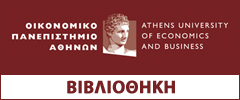| Περίληψη : | Every day consumers are exposed to a multitude of advertising messages, all of which compete to attract their limited cognitive resources. To enhance the effectiveness of communication, relevant research suggests that the content of message should be encoded in such a way that it becomes interesting and meaningful to the audience. The underlying premise behind traditional approaches to brand communication is that messages corresponding to consumers’ knowledge and experience (i.e., consumers’ schemata) are more likely to be relevant, comprehensible, and appealing. In essence, communication effectiveness is traditionally viewed as a positive function of the fit between consumers’ schemata and the content of communication. However, directly matching the message to consumers’ mind may not always be the most effective strategy. Although the notion of schema–stimulus correspondence should not be disregarded, the highly competitive market environment calls for alternative, perhaps unorthodox, approaches of reaching out to consumers. To this end, psychological theory points toward a different perspective according to which information that does not match existing knowledge may have favorable effects. Schema-based research indicates that incongruent stimuli induce cognitive arousal and may lead to more positive responses, if discrepancies are successfully resolved. This thesis investigates the phenomenon of ad–brand incongruity. In particular, drawing on schema theory in psychology, consumer responses to ads that vary in terms of incongruity (i.e., congruent, moderately incongruent, and extremely incongruent) with the brand schema are examined. In a series of five experimental studies the superiority of moderately incongruent ads is hypothesized and tested, while the underlying mechanism as well as the boundary conditions for the positive effect of moderate ad–brand incongruity are identified. Overall, the findings reveal a non-monotonic, inverted U-shaped pattern across the degrees of ad–brand incongruity, with moderately incongruent ads having the most positive effect on ad processing, ad recall, attitude toward the ad (Aad) and attitude toward the brand (Ab). Participants find it more difficult to make sense of incongruent ads, but they do manage to resolve ad–brand incongruity and comprehend the message, unless discrepancies are extreme. Comprehension of a more cognitively-challenging message underlies responses to incongruity. In addition, the psychological satisfaction participants experience from the resolution of incongruity has a positive mediating role in the effects of incongruity on both Aad and Ab. The results also show that the affect already stored in the brand schema drives brand attitude formation in response to congruent and extremely incongruent ads, whereas both schema- based and stimulus-based affect determine brand attitude in response to moderately incongruent ads. Finally, the superiority of moderate ad-brand incongruity is qualified by a number of factors. Specifically, incongruent advertising does not seem to be effective when brand information is presented verbally as well as when consumers are highly involved in the process of communication. Likewise, ad–brand incongruity seems to have detrimental effects for brands with a weak, under-developed schema as well as in communication situations where processing opportunity is limited. The implications of these findings for theory and practice are discussed in detail. The thesis concludes by identifying the limitations of this work and by offering suggestions for future research.
|
|---|







 Copyright © 2013 Βιβλιοθήκη Ο.Π.Α. Με την επιφύλαξη παντός δικαιώματος.
Copyright © 2013 Βιβλιοθήκη Ο.Π.Α. Με την επιφύλαξη παντός δικαιώματος.